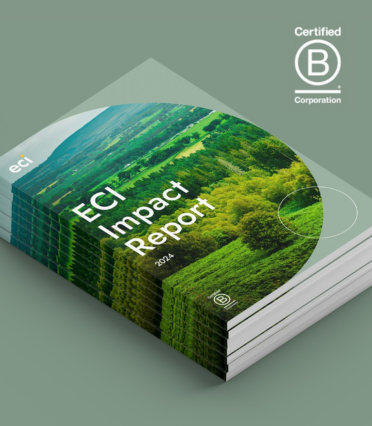ECI recently brought together Sales and Marketing leaders from across our portfolio to network, share the challenges and opportunities they’re facing and discover the latest developments in customer acquisition, conversion and retention. We were delighted to be joined by delegates from across our entire portfolio, and were lucky to hear from Lisa Gough, Head of Sales at Moneypenny; Paul Silver, Global Chief Strategy Officer at MiQ; and Chris Ginnelly, Managing Partner at Sandler. Here we pull together key takeaways from the day:
1. Paranoia can help – act as if your customers will leave!
Lisa Gough from customer communications business, Moneypenny, discussed the journey they had been through in improving customer success and driving net revenue retention. Like many companies tackling ’churn’, the first challenge was cleaning and analysing cohort data and refining collection processes to see the ‘true’ landscape. Only once this exercise is complete can you really see where higher rates of churn are, and then you can really begin tackling the problem head on.
And that is when the mindset shift needs to happen. Everyone needs to believe that customers will leave at the points where there is a higher propensity of churn, so the collective activity becomes working out what’s causing them to go, and importantly what actions can be undertaken to prevent it.
Lisa discussed the need for an open approach around the questions we ask to achieve that. Why did they originally buy your service/product? Has that reason changed? Are you helping to solve that need for them? This might mean having honest conversations, for example, if they’re underusing your service why not have that discussion? It’s better for a client to change service level or start using different services, than to lose them in the long run because they feel they aren’t getting good value.
2. Spring clean your customer journey to help them stay
Lisa talked us through the Moneypenny term of ‘opening the cupboards.’ The importance of pulling every step of the customer journey out and considering why things are done the way they’re done. Data should support this process, using it to test hypotheses as to why things are/aren’t working, and should be used to generate new actionable insights.
For example, at Moneypenny this created insights as to why some individuals were higher performers, and it taught Lisa that not everyone is good at every part of their role. By using data to assess why some individuals performed better in different areas, it allowed them to work out people’s skillets so they could play to their strengths – i.e. not everyone is great at processes and a good relationship builder. Similarly, if certain account managers had a particularly low rate of churn, how could an environment be created for them to share their learnings across their team?
Creating the right environment to constantly challenge and improve customer processes and take action based on what the data tells you works – it’s added 5 percentage points to Moneypenny’s net revenue retention in the past year!
3. Authenticated or anonymous – time to tune your digital ad strategy?
Paul from MiQ, the programmatic media specialist, talked the group through changes to Google’s upcoming cookie policy. Whilst the date for the change has now been postponed to 2023, he spoke about the inevitability of the end of cookies and consistency across browsers, so the importance of preparing now for a new digital marketing world.
The first step to that is auditing where you currently use cookies in digital marketing and assessing the impact. For example, whilst paid search marketing will see a limited impact, remarketing will definitely be affected.
In the longer term it means your ad strategy will be split into ‘authenticated’ and ‘anonymous’ users. There will be benefits to having authenticated users – by which we mean targeting individuals who have logged in or confirmed their identity in some form – in that it will be more persistent and easier to tie to 1st party data. However, there will be inevitably be a smaller audience set, so you will need to become smarter about how to promote to anonymous users. This might be by using geo location, contextual signals, or cohort IDs. It’s why its worth auditing now and understanding the added complexity around digital ad strategies in the post-cookie world.
4. Is it time for you to hire a Sales Operations role?
Chris Ginnelly from sales specialist, Sandler, discussed how often Sales Leaders end up treating forecasting as an art rather than a science, as they tend to ask salespeople their opinions on the likelihood of a deal, and then have to weigh up the different individuals providing the forecast, and their own unique brand of optimism/pessimism. This means that fundamentally you don’t have control over the forecast, muddied as it is by subjectivity, and every time you miss or overshoot a forecast, you are sending the message to the board that you aren’t in control.
The problem is then furthered by the fact that Sales Leaders often lack the time to truly collect and analyse the data — their strengths are often around relationship building not analytical capability. This means they’re missing both the capacity and the capability to truly leverage the available data for more accurate forecasting, which is why having a Sales Operation role is so important. Having a dedicated role to track and improve the data, means you can act proactively, providing Sales Leaders with information, rather than guestimates. It means your forecasting can lean more towards the science, giving you better control.
5. Are you asking your sales team the right questions?
Closely tied with leveraging data and pattern recognition for more accurate forecasting, Chris discussed how most people ask their sales team the wrong questions. To demonstrate, he asked the group what one key question they would ask a salesperson to assess if the deal was going to happen, and the majority of the responses related to the “confidence” of the salesperson. Chris stated that to truly get better at forecasting, the important questions have to be about what the customer said, not what the salesperson thought. At a basic level that would look like:
- Why do they think our solution works for them?
- Why have they said they are going to choose us over competition?
- Why have they said they need to make this decision now?
Using this framework sales leaders can then drill down to the underlying questions that are driving the buying process, and the onus is on the salespeople to make sure all those questions have been answered before they can progress to the next stage of the sales funnel. This will mean they have the underlying fundamentals to more accurately assess their own forecast, and that can be used by Sales Operations to create a more accurate view of pipeline.


